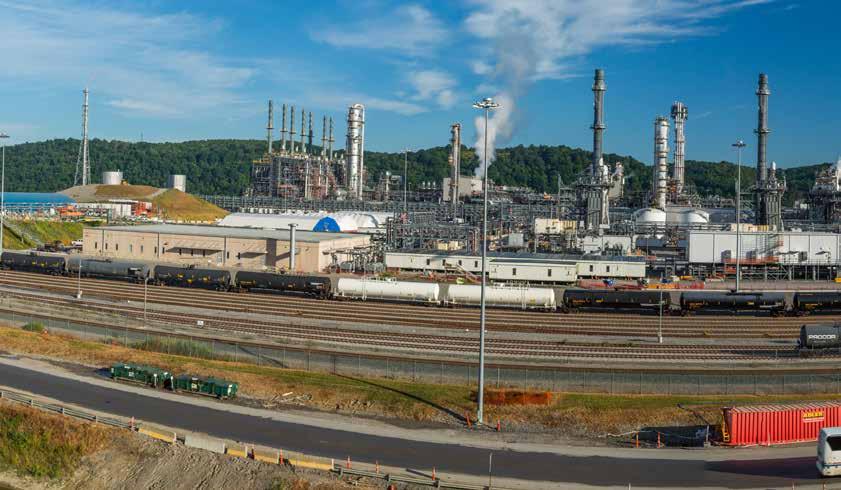
29 minute read
FEATURE
With construction on Shell Chemicals’ polymers plant in Monaca completed in 2022, work on a second cracker is expected in the latter half of the decade. Photo by Shell Chemicals.
Historians and economists are generally less dramatic than sportswriters, but there are times when it is appropriate to declare that an era has ended. When World War II ended, America eclipsed Europe as the driving force of global events. In the mid-1980s, when heavy manufacturing ceased in Western PA, the course of daily life changed dramatically in dozens of towns. And, in the middle of this decade, a few construction projects will wrap up that could mark a generational change in construction in Western PA. Whether the construction industry remains on its current robust trajectory from 2025 to 2030 is an open question.
By that time, construction will have been booming in Pittsburgh for two decades. When the regional economy recovered fully from the 2001 recession, construction began on an extended string of major projects and heightened demand that will culminate in the construction of four billiondollar projects. With the Shell Monaca Polymer project completed, work on ALCOSAN’s expansion, the airport’s Terminal Modernization Program, and the UPMC Heart and Transplant Hospital will carry on through 2025. In the two decades since 2005, construction provided full employment, and generally experienced a shortage of workers. Dozens of contractors saw their revenues top $100 million. There were always big projects on the horizon.
In 2025, that horizon will look emptier than it has since the Plan B construction boom of the late 1990s. Since the late 1990s, three major sports venues, a convention center, and new airport have been built, and a massive expansion of the region’s main treatment plant has been undertaken. There are not a lot of mega public investments left for this generation to make. The construction industry will rely upon the private sector of the economy to drive demand for services in the latter half of the decade.
That is not the worst-case scenario. Private commercial development played an outsized role in construction during the 2010s. New industries have emerged – and are emerging – to create employment and demand for space. Pittsburgh’s economy is forward-looking, with many prospects for opportunities. Unlike in 1990, when the construction industry needed a major infusion of public projects to create demand, it is plausible that private industry will provide significant new construction opportunities. The question is, how much opportunity?
What Will Drive Demand?
There are macroeconomic trends that will have an influence on construction demand heading into the next decade that will also be felt in Pittsburgh. Associated General Contractors’ chief economist, Kenneth Simonson, outlined eight of these factors (see page 27) in his outlook presentation for 2023.
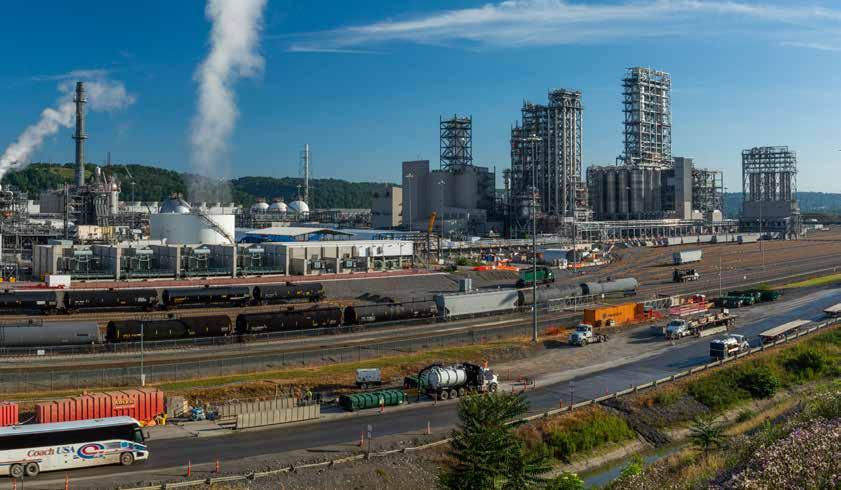
Among the global/national trends that are most likely to track similarly in Pittsburgh are a declining birth rate that will suppress demand, a continued shift in retail to e-commerce, more specialized and online healthcare, lower demographic support for higher education, and increased construction of facilities for alternative energy production.
Among these, the decline or stagnation of Pittsburgh’s metropolitan population is the most significant to demand creation in 2025-2030. Simonson spoke of the declining birth rate suppressing demand for goods and services and, therefore, facilities. For Pittsburgh, the lack of population growth is less a suppressor of goods and services than it is a drag on economic development. Companies looking to locate in Western PA will see the stagnant population as a risk to finding workers. Those companies that are in Pittsburgh will find it harder to grow in a region where the workforce is not growing. While this has been a problem in Pittsburgh for more than 30 years, the challenge of attracting population will be greater in the coming decade.
“A big challenge we’re going to be facing is that a lot of the population issues we’ve been dealing with over the past several decades are now becoming more of a nationwide phenomenon,” says Jim Futrell, vice president of research for the Allegheny Conference on Economic Development, “The population is aging nationwide, and the birth rate is declining. Legal immigration is still at a trickle. We are not feeding the population base. Pittsburgh will be competing with a lot more regions for population.”
One sector that will feel the population squeeze most directly is the residential market. Absent an influx in new residents, the demand for new homes and apartments will remain muted. Construction of new multi-family units saw an uptick in 2013 that will endure into the middle of the decade; however, the level of construction in the Pittsburgh multi-family market is relatively low. Its “boom” years have seen less than 3,000 units and the 10-year average since 2013 is 2,125 units, a good month’s worth in Atlanta or Austin. Apartment demand in Pittsburgh has been propped up somewhat by the low inventory of homes for sale since the end of the Great Recession. Should that fundamental condition change, demand for apartments would likely fall, even if the current trend of a growing younger demographic cohort continues.
It is the demographic trends that offer the best hope for a shift in demand in the housing market. Builders added about 4,000 new single-family homes each year in Pittsburgh from 1985-2005, but the average volume has fallen by nearly 1,000 homes annually since then. One of Pittsburgh’s defining demographic trends – its aging population – should be creating a dynamic home market, with empty-nester Baby Boomers selling more homes than there are buyers. Since
the early 2010s, however, homeowners have been staying in their family homes much longer than in previous generations. It is possible – maybe even expected – that this trend will reverse in the latter half of the decade when Boomers begin to reach their 80s. Residential developers are unlikely to risk millions of dollars in anticipation of that reversal. New home construction is likelier to be a lagging indicator of a population change than a leading one.
The drivers of demand for construction in the latter half of the decade are more likely to come from the job-creating sectors, like emerging technologies, healthcare, education, and manufacturing.
Five years ago, as construction at Shell Chemical’s polymer plant was gearing up to the billion-dollar-plus construction level each year, the outlook for manufacturing construction was bullish. Given the decades-long buzz about new technologies, it was surprising that the expansion of chemical, steel, and natural gas-related manufacturing was spurring billions in investment. Since 2017, however, markets have changed.
Manufacturing is not dead as a potential driver of new development, but its impact has been delayed by weakness globally. By the middle of the decade, however, the business cycle could be more favorable.
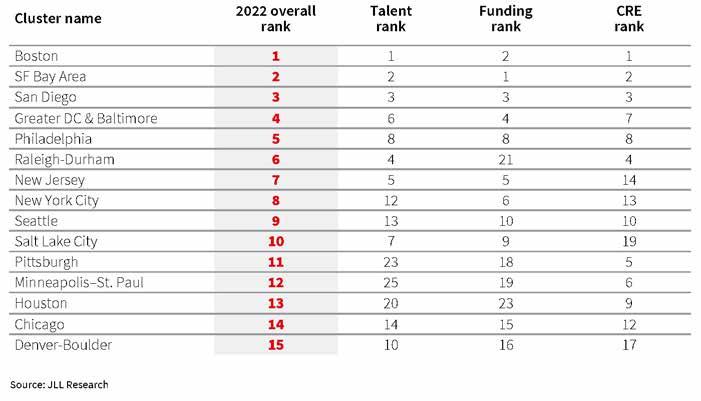
Natural gas extraction and processing is a political football; however, its commercial viability has improved as its price has risen over the past two years. At the end of the year the price of natural gas had fallen from its mid-year highs but, at $4.50 per million cubic feet, was a dollar or more higher than in the salad days of the Marcellus shale buildout in the early 2010s. The potential for downstream development still exists, whether in petrochemicals or in more refined applications like hydrogen production. PTT is rumored to be in negotiations with a partner or buyer for its Dilles Bottom site, increasing the possibility that a second cracker could be under construction by the second half of the decade. And the gas processing infrastructure that was developed in Western PA during the 2010s will require hundreds of millions in capital expenditures for maintenance and modernization.
Supply chain onshoring was predicted to be a beneficial trend that resulted from the disruption caused by the pandemic. While a wave of new projects has yet to swamp the U.S. or Western PA, the supply chain adjustments made by most industries have resulted in construction of more domestic warehouse space. Manufacturing has also seen an increase in the U.S. as suppliers have added incrementally to what is produced closer to their customers. On a limited basis, some industries have invested large sums to bring key manufacturing operations back home. The $10 billion Intel plant being built outside Columbus, OH is an example of such an investment.
Advanced manufacturing should also see an incremental buildup throughout the decade. Research and development, both at the university and private sector levels, has grown and the commercialization of new technology has increased. Neighborhood 91, adjacent to Pittsburgh International Airport, is an example of how the breakthroughs in advanced manufacturing can translate directly to new construction.
While manufacturing has the potential to be a resurgent
JLL ranked Pittsburgh 11th among U.S. cities for investment and development of life science research and applications.
construction driver by 2025, the more likely sources of booming development in the latter half of the decade are the emerging technologies that have become the foundation of the Pittsburgh economy over the past 20 years. If construction comes from tech, it is more likely to be the result of sustained innovation than a new technology that takes off. Pittsburgh has seen the lightning-in-a-bottle innovation flare brightly and then fade in the recent past (FORE Systems, Uber, etc.). The “next big thing” can drive construction on a limited basis, but the flare out of that next big thing dampens momentum for talent and venture capital accumulation.
The good news in 2023 is that there has been the kind of steady innovation that builds long-term momentum in several industry clusters.
Robotics and autonomy were in the news quite prominently in 2022. The surprise shutdown of vertical farming company, Fifth Season (formerly Robotany), and the unsurprising decision by Ford and Volkswagen to discontinue funding Argo AI at levels that could sustain its operations were reminders that some emerging technology companies will not survive. One month earlier, however, there was rather good news for the sector when the U.S. Department of Commerce announced that southwestern PA was a winner in the Build Back Better Challenge.
A coalition of robotics and autonomy industry players, civic and government leaders, elected officials, and academics submitted a response to the challenge under the name of the Southwestern Pennsylvania New Economy Collaborative. In September, the Pittsburgh group learned it had been awarded $62.7 million to help implement five projects aimed at upskilling workers, providing capital and technical assistance, and supporting small-to-medium-sized companies in the industry sector. The focus of the Southwestern Pennsylvania New Economy Collaborative is on equitable growth of robotics and autonomy, so its expectations are that the projects will grow the workforce; however, its projects are forecasted to add more than 1,000 jobs and retain almost 1,200 others.
Robotics/autonomy as a sector is projected to see job growth of 6.5 percent annually. For Pittsburgh, that would mean the employment in robotics and autonomy would double by 2030, to 12,600 jobs. Considering that this sector generates indirect employment at a rate of better than one-to-one, there should be demand for an additional 1.2 million square feet to house the employment base by 2030. Should additional manufacturing and testing space accompany that growth – not a sure thing by any means – that demand would grow substantially.
At the end of 2022, Pittsburgh ranked seventh in autonomous businesses establishment and trailed only Detroit/Ann Arbor for market leader locations. For the most part, Pittsburgh is a
LET’S BUILD A SOLID FINANCIAL FOUNDATION.
100 PINEWOOD LANE, SUITE 201 | WARRENDALE, PA 15086 (724) 934-5300 | hbkcpa.com
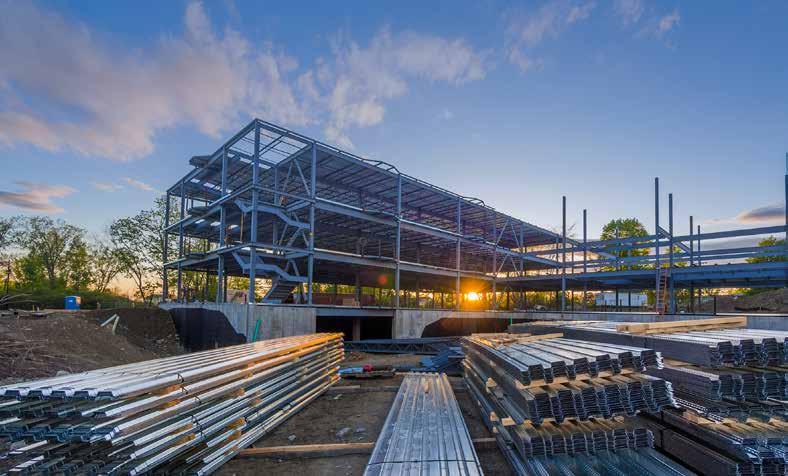
Source: Associated General Contractors of America.
research and development center for robotics and autonomy, but its position as one of the global centers for the sector increases the chances for expansion. Such an expansion along the rivers in Lawrenceville – in the so-called Robotics Row area – and in Hazelwood Green, where Advance Robotics for Manufacturing is located in Mill 19 and Carnegie Mellon plans to build its $75 million Robotics Innovation Center in 2023. Expansion from commercialization of research and development in artificial intelligence is likely to be less concentrated, according to Steve Guy, president and CEO of Oxford Development Company.
“Artificial intelligence is one industry that I think is going to be spread out in terms of how they manage their people. I think the hundred thousand square foot user will be the exception. There will be more 20,000 and 30,000 square foot centers,” Guy predicts. “That said, there are so many applications coming off AI technology that the volume of these companies may be far more significant. Those companies have huge investments in personnel for project management and coding. That’s their capital spend. And I think it will be very significant.” Life sciences may represent the most lasting opportunity to be a sustainable driver of development in Pittsburgh. The confluence of information technology and healthcare innovation that exists in Pittsburgh (primarily within a ten-block area in Oakland) is occurring in a region with demographics that are supportive of growing healthcare demand. Pittsburgh is older than most cities. It is home to world-class medical research and treatment for cancer and blindness. There is a history here of medical breakthroughs and advancements in vaccines and transplants.
In its 2022 Life Sciences Research and Cluster Rankings report, JLL measured the key factors supportive to life science innovation and developed a composite score that weighed talent (35 percent), funding (30 percent), and commercial real estate (35 percent). Pittsburgh ranked 11th in the U.S.
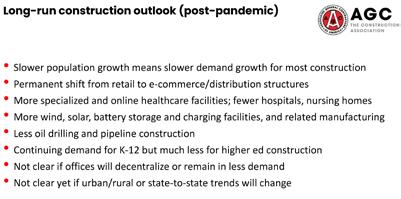
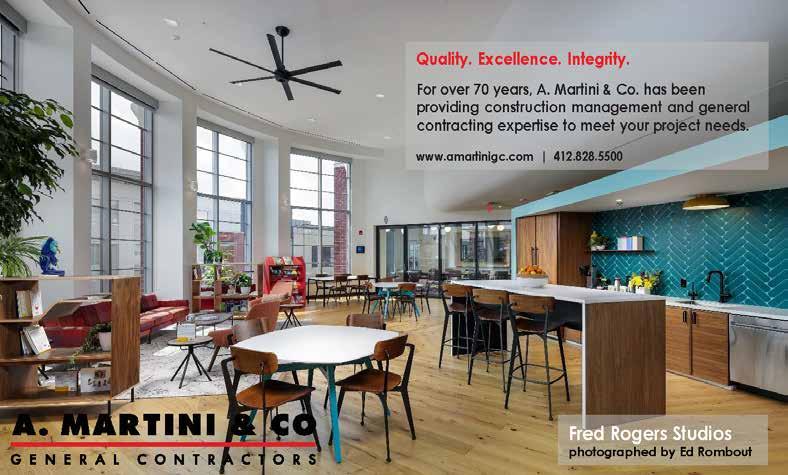
In its findings, JLL found that the strength of the universities and the growth momentum for key talent were pluses for Pittsburgh; however, JLL cited the shallow talent pool, lower venture capital investment, and limited lab infrastructure as drags on the ranking.
It is the latter factor, although currently a negative, that represents significant opportunity for high-quality development and construction, particularly if the talent pool and capital investment made in Pittsburgh continues to improve. Even with stagnant population growth, Pittsburgh has seen an average employment growth of seven percent annually since 2020 in this sector. That rate is expected to accelerate in the latter half of the decade.
In Pittsburgh, continued growth in employment and innovation in these sectors is what is expected to drive new construction later this decade. For University of Pittsburgh, the idea of being a “partner and anchor” for private sector development – as it described the university’s role in its latest Institutional Master Plan – would drive infill construction along Forbes and Fifth. The Murland Building, Walnut Capital’s Innovation Tower, and the proposed 3440 Forbes Avenue life science tower Turner Construction will build for Wexford Science + Technology are examples of how the private sector can assemble older, low-rise properties along this innovation corridor and replace them with larger, denser facilities for research and development. “I’m still bullish on the tech sector. We have a lot of opportunity to grow. It’s not just robotics. It’s artificial intelligence, companies like Google, Apple, Facebook,” says Walnut Capital’s president, Todd Reidbord. “The other sector that makes me bullish is life sciences. I think the combination of Pitt and UPMC is a sleeping giant because they have such great academic research. It has not yet translated very well to the corporations. When you look at what is being done in Philadelphia or San Diego in life sciences, we have the same – or better – infrastructure in terms of universities and medical centers but we just haven’t taken advantage of it yet.”
If this portion of an innovation corridor unfolds as desired, developers will be building several million square feet of research, office, labs, residential, hospitality, and street-level retail. In other cities construction of these kinds of districts tend to accelerate in pace as the concept is proven. Even if that does not occur in Pittsburgh by 2030, the current pace of demand suggests that another three to five new buildings will be built along Forbes and Fifth in the latter half of the decade.
What could create a booming level of demand for millions of square feet of high-end space? It was the long-term vision of Pitt’s Chancellor Mark Nordenberg and Carnegie Mellon’s Jared Cohon that the health and life sciences prowess of the former would combine with the information technology prowess of the latter to accelerate the region’s economic growth when they announced the Regional Economic
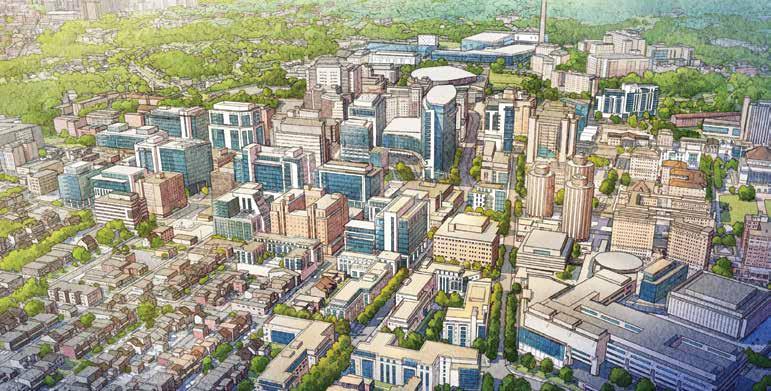
Pitt’s vision for the heart of the Oakland business district by 2030 includes a cluster of privately developed research facilities along Forbes and Fifth (left center) and a health sciences cluster surrounding the new UPMC Heart and Transplant Hospital at Presbyterian (center). Rendering from University of Pittsburgh.
Avison Young creates real economic, social and environmental value as a global real estate advisor, powered by people. Our integrated talent realizes the full potential of real estate by using global intelligence platforms that provide clients with insights and advantage. Together, we can create healthy, productive workplaces for employees, cities that are centers for prosperity for their citizens, and built spaces and places that create a net benefit to the economy, the environment and the community.
From our integrated business platform to our experienced attorneys, our full-service construction practice never stops delivering the results you deserve.
clarkhill.com | 412.394.2428
Thismaterial may be deemed “AttorneyAdvertising” Development Project in 2002. CMU President Subra Suresh articulated the potential for that collaboration when he described the ForbesFifth corridor between the two universities as an innovation corridor that would flourish. That collaboration has yet to reach its potential in 2023, but it exists as a powerful opportunity that would drive demand for facilities.
“With what the two universities bring to the table, that collaboration would be a market edge for Pittsburgh that could rival what we see around John Hopkins or Washington University,” predicts Bob Reppe, assistant vice president and university architect at Carnegie Mellon University (CMU). “If we can figure out how to get the two institutions to the table on the right projects, the result could be that game changer people are looking for.”
“The whole Fifth-Forbes corridor is for us an opportunity to advance our aspirations towards supporting translational work in the life sciences. We’re also interested in seeing the densification of commercial and retail space to support the neighborhood,” says David DeJong, senior vice chancellor for business and operations at University of Pittsburgh.
The strength of Pittsburgh’s higher education construction market runs counter to the prevailing trend nationally. Universities have been struggling with declining enrollments since the late 2010s due to higher tuition costs, a shift in the overall view of the necessity of a college degree, and fewer young people of college age. The latter demographic trend becomes a cliff in the middle of the decade. But, while the landscape will be challenging for colleges and universities nationwide, those institutions perceived to be in the top 50 or 100 are expected to flourish. It is Pittsburgh’s good fortune to have two such institutions, which have campuses that now cross boundaries.
Healthcare, as a construction sector, has arguably been the driver of the most construction volume over the past decade. The region’s two largest health systems, UPMC and Allegheny Health Network (AHN) have spent roughly $400 million annually on renovations, expansion, and maintenance throughout their systems, much of it in Western PA. St. Clair Hospital completed a $100 million-plus expansion. And UPMC and AHN built both new hospitals and outpatient facilities throughout Southwestern PA.
The extended capital investment in healthcare followed a few years of relatively little spending in the early 2010s, as hospitals wrestled with
the new reimbursement landscape under the Affordable Care Act (ACA). While there is no similar legislative or regulatory headwind like the ACA today, the next few years are expected to see leaner capital spending as healthcare reassesses a changing post-pandemic landscape.
“In the year and a half since vaccines have been available, we have seen our volume recover but it is still lower than it was before the pandemic, on an inpatient basis,” says Roger Altmeyer, vice president of project development and construction at UPMC. “We don’t know if that is because people are still concerned about coming to the hospital, but inpatient volumes are low industry wide. When we look at development in the future, the trend continues to be towards outpatient services. There continues to be more that we can do on an outpatient basis, so we expect there to be more facilities in the communities, rather than in a large urban hospital.”
“The healthcare industry continues to grapple with cost containment as the federal government continues to clamp down on reimbursements. There is and will be a continual site of care shifting and regulators will continue to push more acute treatments to an outpatient setting,” predicts John Schrott, president of IKM Inc., an architectural firm with an extensive healthcare practice. “That means those outpatient procedures will be different from today’s outpatient procedures because those patients will need to recover for a longer period. Outpatient centers we have now will need to be modified to accommodate these ‘23-hour’ patients.”
Schrott expects to see joint replacements, interventional cardiology, and bariatric procedures become largely outpatient. The role of the large urban hospital will be to care for the patients with the most acute illnesses. That transition in function will create construction opportunities.
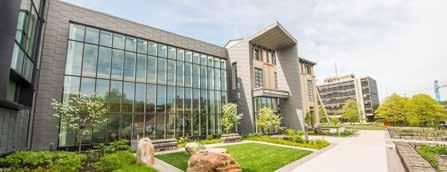
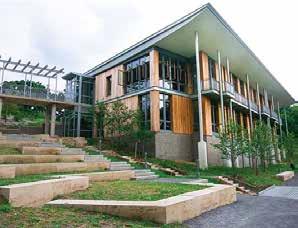
“There will have to be renovations at the larger, older hospitals to make those facilities better suited to handle patients with more acute conditions,” Schrott says. “The second half of this decade will be interesting as we see less utilization of tertiary care facilities, more utilization of outpatient facilities, and the further advancement of technology in our normal healthcare treatment and diagnosis.”
Where Will Construction Happen?
CMU has been on a building binge for more than a decade, adding eight new buildings for classrooms, research, and residential use, along with doing major additions on several others. Full-Service Exterior Envelope Contractor

New Construction Roof Replacement Exterior Cladding Metal Fabrication Maintenance & Repairs 24/7 Emergency Response
Frick Environmental Center—LEED Platinum PNC Tower— LEED Platinum
Carnegie Mellon University Cohon Center
800-683-4586 | www.krsm.net
Wheeling, WV | Frederick, MD | Columbus, OH | Lexington, KY | Pittsburgh, PA
Dream it. Fund it. Design it. Build it.
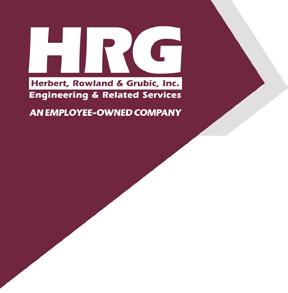
Our team of planners, engineers, landscape architects, and financial specialists can help you create a vision for your community and turn it into reality.
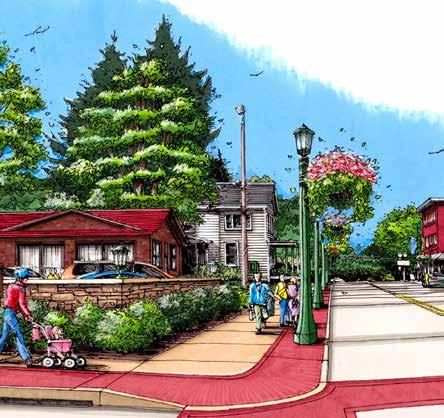
www.hrg-inc.com
We are Pittsburgh
Commercial Real Estate
Growing Thriving
Keeping pace with commercial real estate in a growing city is not always easy. Whether you are an investor, landlord or tenant, Colliers International | Pittsburgh’s experts will guide your organization through this ever-changing landscape. • Office • Industrial • Investment • Retail • Valuation • Property Management
colliers.com/pittsburgh 412 321 4200
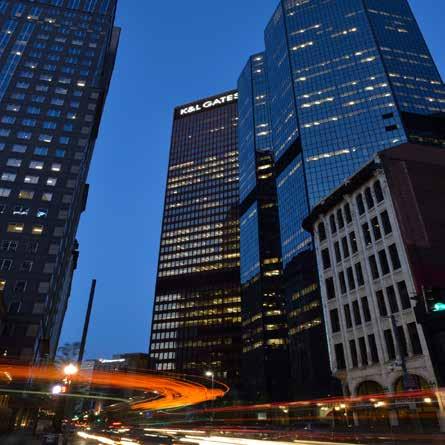
By 2025, construction will be winding down or completed on its two newest buildings, the $260 million R. K. Mellon Science Center and the $75 million Robotics Innovation Center. Reppe says that there are other new buildings on CMU’s master plan, but a period of reevaluation is likely to follow the current burst of construction.
“We have a lot of capital maintenance to do on our legacy buildings, especially on our 100-yearold Hornbostel buildings. They need a complete code update,” he explains. “Another thing that we frankly don’t know the answer to is what to do with the existing Mellon Institute after the completion of the R.K. Mellon Building. How do we position the Mellon Institute for the future? Is it more science? Is it a mix of science and other disciplines? That’s a problem we’ll have to be solving in the next five to eight years.” A third priority CMU will address is student housing. Three new student residence buildings – two of them new construction - have been completed as a first phase. Reppe explains that a second phase of housing is planned for the latter half of the decade that will require demolition of existing residences.
“We are looking to densify student housing, bringing an existing facility down and replacing it with something denser,” he says. “The Greek quad is a great example. It has 80 beds per acre where everything that we have built lately is 300 to 350 beds per acre.”
“Those are the three big things. Of course, there is always the potential for the next graduate who makes a billion dollars in an IPO to come back with a gift, saying that we need a new building” Reppe laughs.
A few blocks away, University of Pittsburgh is underway with the first wave of its $1 billion capital plan. Four building projects of more than $100 million each – Scaife Hall expansion, the new Student Recreation and Wellness Center, the Arena and Sports Performance Center, and a new central plant – have begun and a re-working of the improvements to Bigelow Boulevard has been completed. Those projects should carry on into the middle of the decade. The current wave of major construction projects underway and in design are fulfilling the master plan goal of enriching the student experience. In the queue between now and 2025 are two major residence facilities, the $150 million Hillside Residence Hall to be built adjacent to the Student Rec Center, and the $140 million Mid-Campus Residence Hall to be built south of Sennott Square along Bouquet Street.
Construction on ALCOSAN’s $1.5 billion plant modernization and expansion will continue in phases through the middle of the decade. Photo by Mascaro Construction LP.
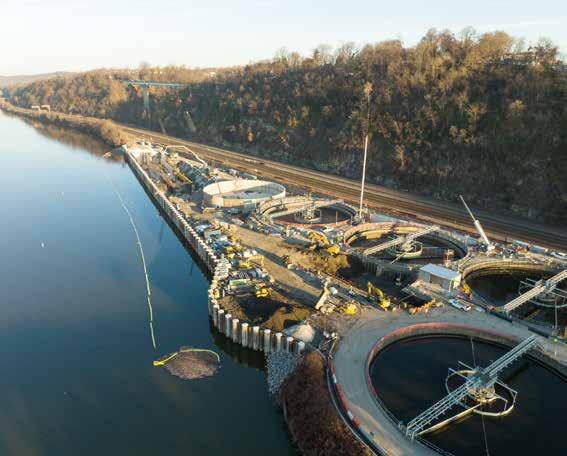
As the campus adjusts to the chaos of those major projects – plus UPMC’s new hospital – a change in leadership is underway, which will coincide with an evaluation of what parts of Pitt’s ambitious master plan will come next. It should come as no surprise that will include a focus on the sciences. Key to the next phase of the master plan is an ambitious expansion and connection of its main east-west academic corridor, centered at Crabtree Hall, that would integrate the university’s main science facilities with UPMC’s new flagship hospital.
“The Crabtree redevelopment is absolutely critical as a nexus for us. It’s not just how we interface with the hospital but, if you look at Pitt in isolation, below Crabtree all of our STEM activities are concentrated very tightly,” explains DeJong. “If you pivot on that building, you have all the life sciences right there. Crabtree Hall is just a critical nexus of all of that. We are looking at that as an opportunity to intensify the already tight synergies that we have. We see it as an opportunity to densify what is there.”
Much of UPMC’s major capital plans are taking a back seat to the efforts needed to get its 900,000 square foot Heart and Transplant Hospital underway. The tower, which will replace UPMC Presbyterian University Hospital as the system’s flagship, advanced to construction during a period of unusual cost escalation and supply chain disruption. The Heart and Transplant Hospital at UPMC Presbyterian will be under construction into 2026, wrapping up at roughly the same time as the airport Terminal Modernization Program. As the bed tower is winding down, construction should be getting underway on the third major project UPMC announced in 2018, the UPMC Shadyside/ Hillman Cancer Center expansion; however, Altmeyer notes that the schedule for UPMC Shadyside has not been set.
“Our investment in the [Heart and Transplant Hospital] requires a great deal of planning and attention,” says Altmeyer. “We are concerned that the programs we are putting there are done right, that we have the right number of beds. Until we have completed that process, most of our attention will be focused on the [Heart and Transplant Hospital]. The leadership at Presby is the same leadership at Shadyside. I don’t expect that we will resume planning on Shadyside until 2025.”
When construction ends on the Heart and Transplant Hospital at UPMC Presbyterian, UPMC plans additional investment in Oakland. Its current institutional master plan (which will expire during the construction of the Heart and Transplant Hospital) includes a 200,000 square foot, nine-story addition to Western Psychiatric Institute and Clinic, a project that should cost in the neighborhood of $250 million. UPMC will also have to consider what to do with the existing Presbyterian University Hospital, which occupies most of a full block of very valuable Oakland real estate, and whether to restart significant expansion projects at Children’s Hospital and UPMC East. Altmeyer says that an update to the master plan will be deferred as long as possible while the impact of the new flagship hospital is evaluated. UPMC has historically invested $250-to-$300 million in capital expenditures to expand, upgrade, and maintain its facilities. That investment has generally occurred separate from major projects like the Vision and Rehabilitation Hospital at UPMC Mercy or the Heart and Transplant Hospital. Altmeyer reports that UPMC continues to invest in its facilities but explains that the impact will differ.
“Remember that we are statewide now. We have hospitals in five different regions throughout Pennsylvania. We will continue to spend that, or more, but those capital investments will be made across a bigger footprint,” Altmeyer says. “Most of our facilities are also older so we have to invest more in infrastructure and maintenance to keep the facilities operating.”
Allegheny Health Network invested roughly half a billion dollars during the first half of the decade building new facilities that brough healthcare to the suburban communities and created its own world-class cancer institute at its Allegheny General Hospital. AHN is continuing that community-focused expansion with the construction of a new $150 hospital in the Canonsburg area. In the second half of the decade, however, the focus of its major capital spending may be at its urban campuses.
At Allegheny General Hospital, a $300-400 million cardiovascular tower, to be located above the existing Cancer Institute and Sandusky Street Garage, has been in the early planning stages since the late 2010s. At AHN West Penn Hospital, the master plan calls for a 350,000 square foot medical office and outpatient facility to be built, along with a 700-car parking garage.
When asked to make predictions about activity in the latter half of the 2020s, commercial real estate brokers joked that they were uncertain about the market for 2023, let alone five years hence. The pandemic changed our work and shopping habits, altering the office and industrial markets dramatically. Going into 2023 with commercial mortgage rates at or above seven percent, developers are treading water until borrowing and construction costs cool. For Pittsburgh’s commercial real estate market there are a few guesses about what will be moving in five-to-eight years. “What will drive demand, in office at least, is having this touchdown or clubhouse space. We need attractive space so that it’s not a mandate to get people into the office but a magnet to draw them in,” says Bill Hunt, president and CEO of The Elmhurst Group. “I hope the answer to regaining balance is not a lot of new supply. I think we developers have to start thinking about how we can improve the existing pie rather than expanding the pie. In the aggregate I don’t know that we need more space.”
“The suburban markets are a question mark for me. The businesses that are there tend to have lots of floor plate and may not have the need for that space with technology, remote work, and artificial intelligence advances that are coming,” says Steve Guy. “I think you will see more tech companies in the suburbs for tech flex on the light industrial side but not large office users. Cargo and supply chain will continue to be served heavily on the industrial side. There is so much opportunity in that market.”
Large scale commercial development is not gone for the remainder of the decade, however uncertain the conditions may be.
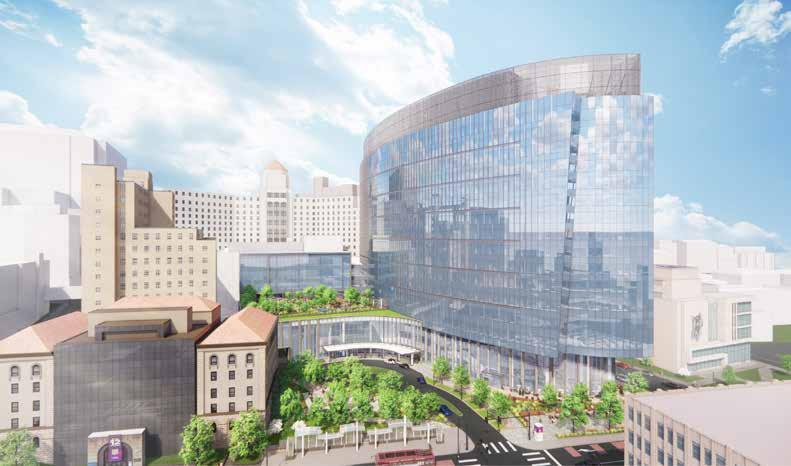
On the north shore of the Ohio River, just west of the Rivers Casino, The Piatt Companies are nearing the start of work on the Esplanade, a mixed-use development of 1.7 million square feet. The project has attracted attention because of some of its unusual recreational features, a splash park, aquarium, and 175-foot Ferris Wheel among them, but the heart of the development will be hundreds of multi-family units, a hotel, and 300,000 square feet of medical/tech/life sciences space.
The $236 million first phase of Esplanade, which will include 300 apartments, a 550-car garage, and marina, should see site work begin by 2024, with construction carrying on in multiple phases through 2028.
Walnut Capital, which began construction of its Bakery Square redevelopment during the Great Recession, expects to start work on its Oakland Crossings development by 2024. That project includes roughly 1,000 units of residential with retail – including a grocery store – and extensive green space. Reidbord says his firm also has plans to expand significantly at Bakery Square. “We acquired adjacent properties and control 34 acres that present development opportunities for current Bakery Square tenants to expand or to develop for new tenants who want to be near Google and other tech tenants,” says Reidbord.
The potential for the economic growth that would support new construction from 2025 to 2030 is not without the potential for problems. The reform of the commonwealth’s corporate net income tax rate that passed last year is a positive move but is a small step towards making Pennsylvania competitive. The regulatory environment, especially on the environmental and municipal entitlement levels, discourages developers. The potential expansion of robotics, autonomy, and advanced manufacturing, if realized, would all require construction of large facilities of the type that have bogged down in municipal planning and zoning offices, and the Department of Environment Protection. There will need to be more barriers to competition removed to see the full construction potential of the next wave realized BG

Big Capabilities. Personal Connections.



Industry leadership from the region’s largest locally-owned accounting firm.
When it comes to your business, we look at the big picture. And we never forget the importance of a personal relationship. With our wide range of accounting, tax and advisory services, you can count on us to deliver day after day.
To learn more, visit www.schneiderdowns.com/construction
Gennaro J. DiBello, CPA gdibello@schneiderdowns.com
Ted M. Pettko, CPA tpettko@schneiderdowns.com







